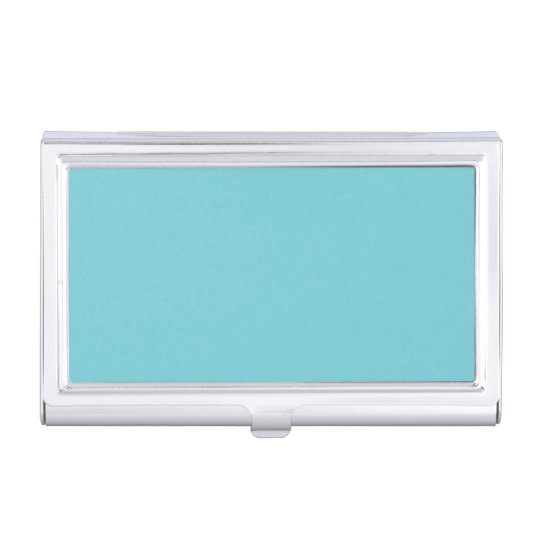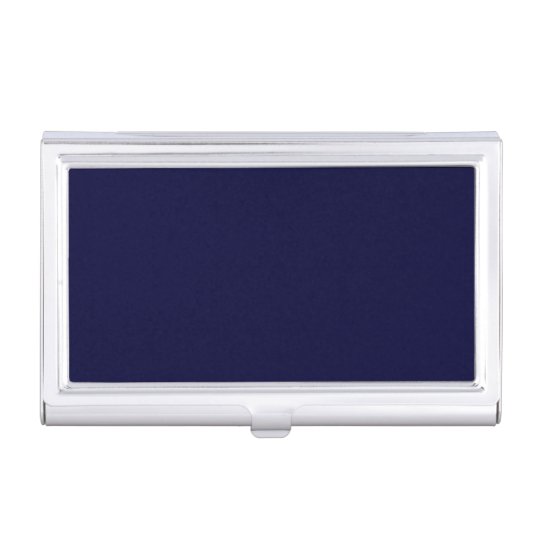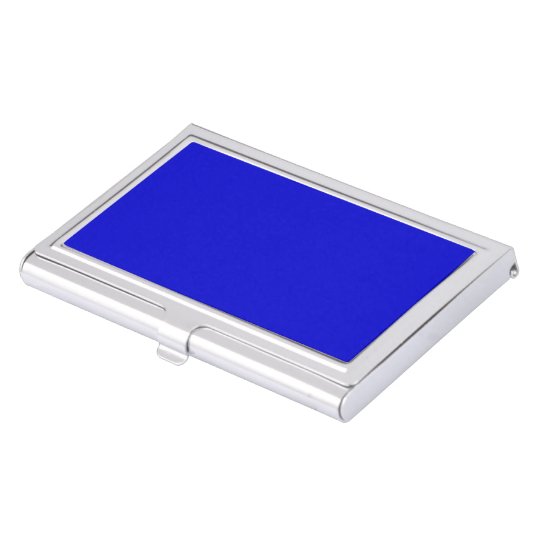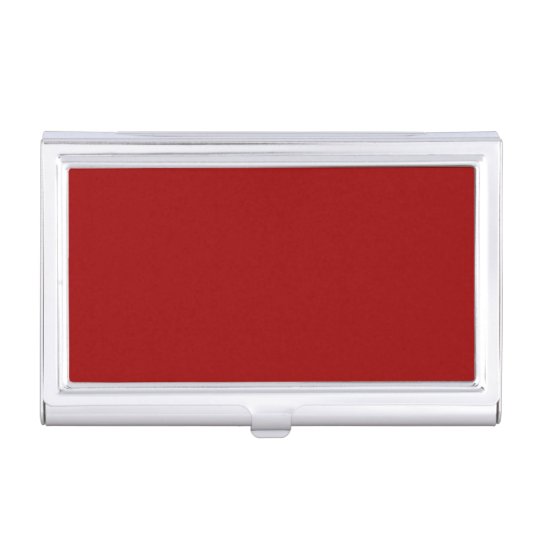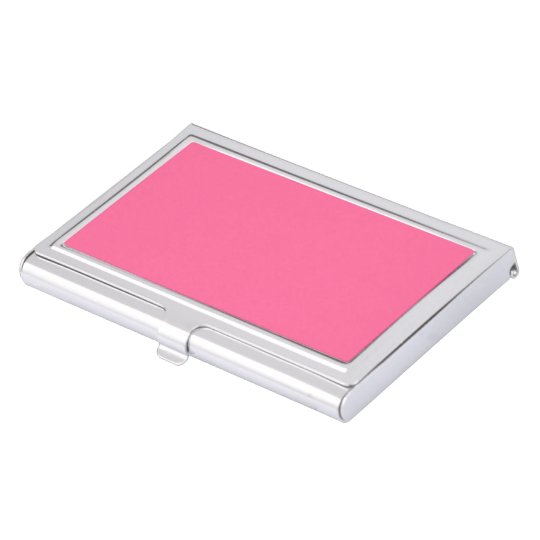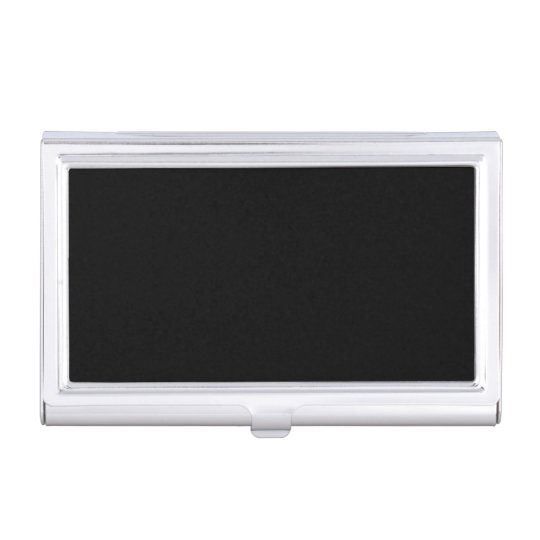Thursday, November 28, 2019
The Executive Suite: LAST DAY 20% Off Sitewide
The Executive Suite: LAST DAY 20% Off Sitewide: LAST DAY 20% Off Sitewide | Use Code: ENDOFJULYZAZ 20% Off Medical Practice Supplies VIEW ALL Manual Prescri...
The Executive Suite: 15% Off School Hall Pass Pads
The Executive Suite: 15% Off School Hall Pass Pads: A great way to keep an eye on student movements outside the classroom and improve school safety. Our hall passes have room for the date, st...
The Executive Suite: 25% Off All Business Cards
The Executive Suite: 25% Off All Business Cards: 25% Off All Business Cards VIEW ALL White Business Card (Matte Finish) $44.25 Semi Gloss Business Card $58.55 T...
The Executive Suite: 15% Off Post It Notes
The Executive Suite: 15% Off Post It Notes: Post It Notes Red Post It Notes $8.80 Orange Post It Notes $8.80 Bright Blue Post It Not...
The Executive Suite: 20% Off Mugs
The Executive Suite: 20% Off Mugs: 20% Off Mugs Grey/Blue Beer Stein White/Gold Beer Stein
Wednesday, November 27, 2019
Medical practices have a love-hate relationship with the fax machine
The administrator for the Centers for Medicare & Medicaid Services has issued a challenge to make physicians’ offices fax-free by 2020. But old habits die hard, especially when it comes to physicians and their patients.
Despite the fact that 86% of physician practices have an electronic health record (EHR) system,[1] many doctors still take notes by hand and utilize fax machines to send and receive data. Although advances have been made in technology, three-quarters of medical communication in the United States occurs by fax, which includes physical or legacy fax machines as well as more advanced faxing technologies such as cloud fax.[2]
Digital cloud fax technology represents next-generation communication capabilities, as documents flow seamlessly through secure email or electronic health information exchange (HIE) and can become part of an electronic patient record.
The demise of the physical fax machine has been predicted for decades, yet it remains a healthcare workhorse. By breaking the habit of paper-based fax and adopting more modern communications channels such as digital cloud fax technology, physician practices can save money, adopt more efficient workflow practices and reduce the chances for a data breach.
The federal government offered more than $35 billion in incentives to encourage eligible professionals or eligible physician practices to adopt EHRs. While the adoption rate is high, the government didn’t mandate interoperability between systems, so disparate systems simply don’t talk to one another. Patient information such as a lab reports arrive via fax. Likewise, orders needing a physician signature, such as a care plan or a home health referral, remain mainly fax-based.
CMS Administrator Seema Verma addresses physical faxes and other forms of non-electronic communication when during a 2018 speech she says, “(H)ealth care providers are in a 1990’s time warp…where doctors are faxing patient records, medical staff are manually entering results into EHRs, and hospitals are handing out data on a CD-ROM while the rest of the economy is functioning on fully digitized, integrated data that informs decision-making instantaneously.”[3]
The problem with all these technology systems is that interoperability among each remains poor. While strides are being made on that front, large gaps remain in a truly integrated patient record. Technology is one hurdle, but the possibility of competition cannot be overlooked.
EHR vendors don’t have much incentive to make their systems compatible with others for fear of losing market share. Health systems and providers, too, can be reluctant to transfer patient information electronically to another hospital or physician to slow patient leakage from their facilities, so they may not be keen to promote interoperability.
Despite the march of technological progress in the exam room, many physicians still rely on handwritten notes and refer to paper copies of records. The fax remains a reliable way to communicate, where records are returned in a familiar format. The comfort level with existing practices cannot be overlooked, nor can the lack of incentives and availability of improved options for document distribution to replace physical faxing.
The healthcare industry wastes more than $9 billion annually by continuing to use manual processes instead of electronic ones, according to the Council for Affordable Quality Healthcare. A manual process costs, on average, $6 more than an electronic one, but the difference can be as high as $11 more. Besides monetary savings, providers could save a minimum of 1.1 million labor hours per week by employing electronic transactions. Each fax or phone call requires an average of eight minutes to handle and as much as 30 minutes.[4]
Multiply each manual process, each phone call, each sent or received fax, and the costs add up quickly.
Industry consolidation has brought a new level of interoperability that is breaking down some of these communication barriers.
But the biggest reason change needs to occur may be the lack of security for a paper fax. HIPAA regulations mandate a tight chain of custody at all times, but it’s difficult to imagine a tight chain of custody for a fax machine in the copy room. Multifunction scanners also can expose PHI.
With the cost of a healthcare data breach topping $8 million, health systems and providers must take all necessary precautions to ensure that patient data in all forms remains safe and secure.
Digital cloud faxing solves the problems and potential breaches associated with physical faxing. First, there is no more fax machine. Communications are sent by secure email, a fully HIPAA compliant solution. Documents are encrypted while in transmission and at rest, arriving directly in the in-box of the recipient, who logs in to view messages. Communications also can be sent through an HIE, another secure document exchange medium.
When deployed across an organization, faxes can be sent from any connected device: computer, tablet or smartphone through a secure mobile app. If communications need a higher level of security, documents can be stored in a secure server with 256-bit encryption.
If a breach occurs, companies that use HIPAA-compliant cloud faxing would be covered by the “safe harbor” provision of the Breach Notification Rule because the encrypted data had been rendered unusable, unreadable, or indecipherable to unauthorized individuals. “If protected health information is encrypted pursuant to this guidance, then no breach notification is required following an impermissible use or disclosure of the information.”[5]
The days of the physical fax machine are numbered – and physician practices would be smart to cut those ties sooner rather than later. Digital cloud faxing combines the utility of faxing with the security protocols that HIPAA regulations and commonsense demand while presenting information in a way that physicians and staff are accustomed to.
 Manual Prescription Pad (Large - Yellow)
Manual Prescription Pad (Large - Yellow)
 Manual Prescription Pad (Large - Pink)
Manual Prescription Pad (Large - Pink)
 Manual Prescription Pads (Bright Orange)
Manual Prescription Pads (Bright Orange)
 Manual Prescription Pads (Light Pink)
Manual Prescription Pads (Light Pink)
 Manual Prescription Pads (Light Yellow)
Manual Prescription Pads (Light Yellow)
 Manual Prescription Pad (Large - Blue)
Manual Prescription Pad (Large - Blue)
Despite the fact that 86% of physician practices have an electronic health record (EHR) system,[1] many doctors still take notes by hand and utilize fax machines to send and receive data. Although advances have been made in technology, three-quarters of medical communication in the United States occurs by fax, which includes physical or legacy fax machines as well as more advanced faxing technologies such as cloud fax.[2]
Digital cloud fax technology represents next-generation communication capabilities, as documents flow seamlessly through secure email or electronic health information exchange (HIE) and can become part of an electronic patient record.
The demise of the physical fax machine has been predicted for decades, yet it remains a healthcare workhorse. By breaking the habit of paper-based fax and adopting more modern communications channels such as digital cloud fax technology, physician practices can save money, adopt more efficient workflow practices and reduce the chances for a data breach.
Status quo tough to change
The federal government offered more than $35 billion in incentives to encourage eligible professionals or eligible physician practices to adopt EHRs. While the adoption rate is high, the government didn’t mandate interoperability between systems, so disparate systems simply don’t talk to one another. Patient information such as a lab reports arrive via fax. Likewise, orders needing a physician signature, such as a care plan or a home health referral, remain mainly fax-based.
CMS Administrator Seema Verma addresses physical faxes and other forms of non-electronic communication when during a 2018 speech she says, “(H)ealth care providers are in a 1990’s time warp…where doctors are faxing patient records, medical staff are manually entering results into EHRs, and hospitals are handing out data on a CD-ROM while the rest of the economy is functioning on fully digitized, integrated data that informs decision-making instantaneously.”[3]
The problem with all these technology systems is that interoperability among each remains poor. While strides are being made on that front, large gaps remain in a truly integrated patient record. Technology is one hurdle, but the possibility of competition cannot be overlooked.
EHR vendors don’t have much incentive to make their systems compatible with others for fear of losing market share. Health systems and providers, too, can be reluctant to transfer patient information electronically to another hospital or physician to slow patient leakage from their facilities, so they may not be keen to promote interoperability.
Despite the march of technological progress in the exam room, many physicians still rely on handwritten notes and refer to paper copies of records. The fax remains a reliable way to communicate, where records are returned in a familiar format. The comfort level with existing practices cannot be overlooked, nor can the lack of incentives and availability of improved options for document distribution to replace physical faxing.
Strong arguments to make a change
The healthcare industry wastes more than $9 billion annually by continuing to use manual processes instead of electronic ones, according to the Council for Affordable Quality Healthcare. A manual process costs, on average, $6 more than an electronic one, but the difference can be as high as $11 more. Besides monetary savings, providers could save a minimum of 1.1 million labor hours per week by employing electronic transactions. Each fax or phone call requires an average of eight minutes to handle and as much as 30 minutes.[4]
Multiply each manual process, each phone call, each sent or received fax, and the costs add up quickly.
Industry consolidation has brought a new level of interoperability that is breaking down some of these communication barriers.
But the biggest reason change needs to occur may be the lack of security for a paper fax. HIPAA regulations mandate a tight chain of custody at all times, but it’s difficult to imagine a tight chain of custody for a fax machine in the copy room. Multifunction scanners also can expose PHI.
With the cost of a healthcare data breach topping $8 million, health systems and providers must take all necessary precautions to ensure that patient data in all forms remains safe and secure.
Bringing the fax into the digital age
Digital cloud faxing solves the problems and potential breaches associated with physical faxing. First, there is no more fax machine. Communications are sent by secure email, a fully HIPAA compliant solution. Documents are encrypted while in transmission and at rest, arriving directly in the in-box of the recipient, who logs in to view messages. Communications also can be sent through an HIE, another secure document exchange medium.
When deployed across an organization, faxes can be sent from any connected device: computer, tablet or smartphone through a secure mobile app. If communications need a higher level of security, documents can be stored in a secure server with 256-bit encryption.
If a breach occurs, companies that use HIPAA-compliant cloud faxing would be covered by the “safe harbor” provision of the Breach Notification Rule because the encrypted data had been rendered unusable, unreadable, or indecipherable to unauthorized individuals. “If protected health information is encrypted pursuant to this guidance, then no breach notification is required following an impermissible use or disclosure of the information.”[5]
The days of the physical fax machine are numbered – and physician practices would be smart to cut those ties sooner rather than later. Digital cloud faxing combines the utility of faxing with the security protocols that HIPAA regulations and commonsense demand while presenting information in a way that physicians and staff are accustomed to.
15% Off Medical Practice Supplies
VIEW ALL
 Manual Prescription Pad (Large - Yellow)
Manual Prescription Pad (Large - Yellow) Manual Prescription Pad (Large - Pink)
Manual Prescription Pad (Large - Pink) Manual Prescription Pads (Bright Orange)
Manual Prescription Pads (Bright Orange) Manual Prescription Pads (Light Pink)
Manual Prescription Pads (Light Pink) Manual Prescription Pads (Light Yellow)
Manual Prescription Pads (Light Yellow) Manual Prescription Pad (Large - Blue)
Manual Prescription Pad (Large - Blue)
__________________________________________________
Appointment Reminder Cards
$44.05
15% Off
$56.30
15% Off
$44.05
15% Off
$44.05
15% Off
$56.30
15% Off
VIEW ALL PRODUCTS
Tuesday, November 26, 2019
The Executive Suite: 25% Off All Business Cards
The Executive Suite: 25% Off All Business Cards: 25% Off All Business Cards VIEW ALL White Business Card (Matte Finish) $44.25 Semi Gloss Business Card $58.55 T...
The Executive Suite: 15% Off Post It Notes
The Executive Suite: 15% Off Post It Notes: Post It Notes Red Post It Notes $8.80 Orange Post It Notes $8.80 Bright Blue Post It Not...
Specific year-end tax strategies For Your Medical Practice : What to watch out for
As we prepare for the Thanksgiving holiday the clock is ticking on variety of tax planning sales that target doctors. Before you make a move under time and sales pressure, considering the following warnings.
Our last discussion provided a high-level look at some of the tax biggest tax issues the I.R.S. itself has identified, the so-called 2019 “Dirty Dozen”. That list includes both tax strategies to avoid that may amount to tax fraud by you and various scams that target you as a taxpayer.
Today, we take a look at some specific strategies that are being heavily marketed to physicians, often with significant time pressure as we near year end. Please keep these basic rules in mind and get personal, professional guidance beyond social media or the input of your colleagues.
1. Using legal means to pay the minimum amount of taxes legally allowed is good business and a business necessity in the current provider compensation environment. Further, contributions to certain “qualified” tax-deductible retirement plans or those that use cash value life insurance policies may have creditor protection by law, always to important to me as an asset protection attorney and to high-liability professionals like you.
2. Even plans that are based on sound legal principles and current tax lax law carry significant risk if they are abused and lack compliance in the way they are actually sold and implemented. Commonly abused legitimate strategies include self-directed IRAs which are often not compliant, and captive insurance companies that often fail to insure real risk and that pay outsize premiums. Along similar lines are tax advantaged real estate investment strategies, like conservation easements and opportunity zones, all of which I have provided previous detail on.
The danger here takes serval forms, the obvious one is the aforementioned compliance risk. There’s also more traditional investment risk; a non-productive property that’s been dead stock for reasons ranging from an undesirable neighborhood to pre-existing restrictions and liabilities may be sold to investors by promoting the tax benefits on future profits that are unlikely to ever actually be realized. Be sure that you’re well educated or advised enough to actually see the tax lipstick that’s been slapped on a pig.
3. Beware of affinity fraud. In some cases, this means a well-meaning individual in a common social circle, (like a shared professional, religious, or cultural group, as just a few common examples), innocently shares a bad strategy or advisor that they believe will help. In other cases, a bad actor intentionally capitalizes on these affinities and current heightened political fears to peddle overtly frivolous claims including the following:
• Contributions are tax-deductible, grow tax free, and come out tax free (you rarely get all three, legally).
• The U.S. government has no legal authority to tax you.
• You can “opt-out” of the tax system by transferring assets to their tax-free trust and will no longer have to pay taxes.
• You will be a trust employee and also no longer have to pay personal income taxes.
• Rich politicians, billionaires, and CEOs all have this kind of planning.
Anyone suggesting any of the above should be immediately removed from your advisory team, regardless of who did the same planning or who made the introduction.
4. Due diligence on your plan and your advisor is a vital first line of defense. Making a mistake on a plan or choosing the wrong planner can cost you a multiple of just paying the tax itself after you pay taxes, penalties, interest and legal fees. You as the taxpayer, not your advisors are civilly and criminally liable for the accuracy of your tax return and all reported deductions and income. Relying on the fact that you were advised by third parties, including those to who you have paid significant amounts of money is rarely a legal defense.
Where possible, work with licensed professionals. While this doesn’t guarantee that their advice is risk free, it is often better than your odds with unlicensed advisors and promoters who typically haven’t had background checks, have no professional liability, can’t offer attorney-client privilege, don’t have professional standards or accountability and perhaps most importantly, no malpractice insurance that you may need to rely on.
There are many other possible exposures and opportunities in the area of tax planning for physicians. Keep these basics in mind as you consider them and avoid being pressured into making expensive, uneducated choices.
 Manual Prescription Pad (Large - Yellow)
Manual Prescription Pad (Large - Yellow)
 Manual Prescription Pad (Large - Pink)
Manual Prescription Pad (Large - Pink)
 Manual Prescription Pads (Bright Orange)
Manual Prescription Pads (Bright Orange)
 Manual Prescription Pads (Light Pink)
Manual Prescription Pads (Light Pink)
 Manual Prescription Pads (Light Yellow)
Manual Prescription Pads (Light Yellow)
 Manual Prescription Pad (Large - Blue)
Manual Prescription Pad (Large - Blue)
Our last discussion provided a high-level look at some of the tax biggest tax issues the I.R.S. itself has identified, the so-called 2019 “Dirty Dozen”. That list includes both tax strategies to avoid that may amount to tax fraud by you and various scams that target you as a taxpayer.
Today, we take a look at some specific strategies that are being heavily marketed to physicians, often with significant time pressure as we near year end. Please keep these basic rules in mind and get personal, professional guidance beyond social media or the input of your colleagues.
1. Using legal means to pay the minimum amount of taxes legally allowed is good business and a business necessity in the current provider compensation environment. Further, contributions to certain “qualified” tax-deductible retirement plans or those that use cash value life insurance policies may have creditor protection by law, always to important to me as an asset protection attorney and to high-liability professionals like you.
2. Even plans that are based on sound legal principles and current tax lax law carry significant risk if they are abused and lack compliance in the way they are actually sold and implemented. Commonly abused legitimate strategies include self-directed IRAs which are often not compliant, and captive insurance companies that often fail to insure real risk and that pay outsize premiums. Along similar lines are tax advantaged real estate investment strategies, like conservation easements and opportunity zones, all of which I have provided previous detail on.
The danger here takes serval forms, the obvious one is the aforementioned compliance risk. There’s also more traditional investment risk; a non-productive property that’s been dead stock for reasons ranging from an undesirable neighborhood to pre-existing restrictions and liabilities may be sold to investors by promoting the tax benefits on future profits that are unlikely to ever actually be realized. Be sure that you’re well educated or advised enough to actually see the tax lipstick that’s been slapped on a pig.
3. Beware of affinity fraud. In some cases, this means a well-meaning individual in a common social circle, (like a shared professional, religious, or cultural group, as just a few common examples), innocently shares a bad strategy or advisor that they believe will help. In other cases, a bad actor intentionally capitalizes on these affinities and current heightened political fears to peddle overtly frivolous claims including the following:
• Contributions are tax-deductible, grow tax free, and come out tax free (you rarely get all three, legally).
• The U.S. government has no legal authority to tax you.
• You can “opt-out” of the tax system by transferring assets to their tax-free trust and will no longer have to pay taxes.
• You will be a trust employee and also no longer have to pay personal income taxes.
• Rich politicians, billionaires, and CEOs all have this kind of planning.
Anyone suggesting any of the above should be immediately removed from your advisory team, regardless of who did the same planning or who made the introduction.
4. Due diligence on your plan and your advisor is a vital first line of defense. Making a mistake on a plan or choosing the wrong planner can cost you a multiple of just paying the tax itself after you pay taxes, penalties, interest and legal fees. You as the taxpayer, not your advisors are civilly and criminally liable for the accuracy of your tax return and all reported deductions and income. Relying on the fact that you were advised by third parties, including those to who you have paid significant amounts of money is rarely a legal defense.
Where possible, work with licensed professionals. While this doesn’t guarantee that their advice is risk free, it is often better than your odds with unlicensed advisors and promoters who typically haven’t had background checks, have no professional liability, can’t offer attorney-client privilege, don’t have professional standards or accountability and perhaps most importantly, no malpractice insurance that you may need to rely on.
There are many other possible exposures and opportunities in the area of tax planning for physicians. Keep these basics in mind as you consider them and avoid being pressured into making expensive, uneducated choices.
20% Off Medical Practice Supplies
VIEW ALL
 Manual Prescription Pad (Large - Yellow)
Manual Prescription Pad (Large - Yellow) Manual Prescription Pad (Large - Pink)
Manual Prescription Pad (Large - Pink) Manual Prescription Pads (Bright Orange)
Manual Prescription Pads (Bright Orange) Manual Prescription Pads (Light Pink)
Manual Prescription Pads (Light Pink) Manual Prescription Pads (Light Yellow)
Manual Prescription Pads (Light Yellow) Manual Prescription Pad (Large - Blue)
Manual Prescription Pad (Large - Blue)
__________________________________________________
Appointment Reminder Cards
$44.05
15% Off
$56.30
15% Off
$44.05
15% Off
$44.05
15% Off
$56.30
15% Off
VIEW ALL PRODUCTS
Sunday, November 24, 2019
The Executive Suite: 6 Ways to Tweak Your Business Model to Spark Growt...
The Executive Suite: 6 Ways to Tweak Your Business Model to Spark Growt...: One of the most common reasons that small businesses fail is because there’s no market need for their services or products. This may seem li...
The Executive Suite: 15% Off Post It Notes
The Executive Suite: 15% Off Post It Notes: Post It Notes Red Post It Notes $8.80 Orange Post It Notes $8.80 Bright Blue Post It Not...
The Executive Suite: 20% Off All Business Cards
The Executive Suite: 20% Off All Business Cards: 20% Off All Business Cards VIEW ALL White Pearl Finish Business Card $60.05 Classic White Business Cards Templat...
The Executive Suite: Why seeing more patients doesn’t equal greater pro...
The Executive Suite: Why seeing more patients doesn’t equal greater pro...: Physicians are increasingly being squished. As reimbursement rates decrease or remain stagnant, many people think the solution is to see mo...
The Executive Suite: 3 Steps to Protecting a High-Risk Startup
The Executive Suite: 3 Steps to Protecting a High-Risk Startup: The next great form of transportation was announced in a June 4, 2019, article from the Los Angeles Times. No, it’s not another rideshare se...
The Executive Suite: 5 metrics to improve your medical practice’s finan...
The Executive Suite: 5 metrics to improve your medical practice’s finan...: With a busy staff and full schedule of patients each day, it may appear as if your practice is thriving. But take a closer look at some of i...
The Executive Suite: LAST DAY 20% Off Medical Practice Supplies
The Executive Suite: LAST DAY 20% Off Medical Practice Supplies: 20% Off Medical Practice Supplies VIEW ALL Manual Prescription Pad (Large - Yellow) Manual Prescription Pad (Large - ...
The Executive Suite: 20% Off All Business Cards
The Executive Suite: 20% Off All Business Cards: 20% Off All Business Cards VIEW ALL White Pearl Finish Business Card $60.05 Classic White Business Cards Templat...
The Executive Suite: 20% Off Schppl Hall Pass Pads
The Executive Suite: 20% Off Schppl Hall Pass Pads: A great way to keep an eye on student movements outside the classroom and improve school safety. Our hall passes have room for the date, st...
The Executive Suite: 20% Off Medical Practice Supplies
The Executive Suite: 20% Off Medical Practice Supplies: 20% Off Medical Practice Supplies VIEW ALL VIEW ALL
Friday, November 22, 2019
The Executive Suite: 15% Off Custom Pens
The Executive Suite: 15% Off Custom Pens: 15% Off Custom Pens Customizable Pen (Purple) $5.25 Customizable Pen (Pink) $5.25 ...
The Executive Suite: 20% Off Medical Practice Supplies
The Executive Suite: 20% Off Medical Practice Supplies: 20% Off Medical Practice Supplies VIEW ALL VIEW ALL
20% Off Schppl Hall Pass Pads
Subscribe to:
Posts (Atom)














